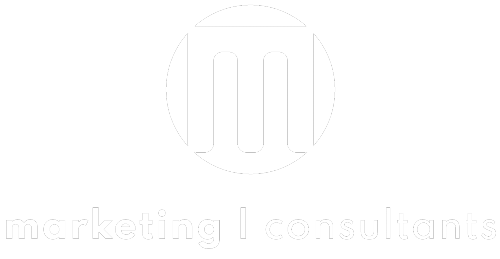When it comes to advertising, businesses often default to what’s easy: digital ads. They’re quick to launch, easy to track, and seem affordable. But choosing where to advertise your business isn’t just about ease — it’s about effectiveness. And that usually means more than one channel.
People don’t live on a single screen. In May 2025, Americans spent 44.8 % of their TV time on streaming—more than broadcast and cable combined. That means the average customer might see your brand on Roku at night, hear it on FM radio during the morning commute, then scroll past it in a Facebook feed at lunch. A plan that shows up in only one of those moments is easy to forget.
Start with Strategy — Not Channels
One of the most common missteps in advertising is starting with the media instead of the mission. The right channel depends on your goal, your audience, and the message you’re trying to communicate. Start by writing down the business result you need. Examples:
- “Add 30 new walk‑in customers this month.”
- “Book 100 demo calls in Q3.”
- “Hit $250 K in online sales during the holiday season.”
Instead of asking “Should I advertise on Facebook or radio?” a better question is: “What outcome am I trying to create — and what mix of channels will help get me there?”
Where to Advertise Your Business: Comparing TV, Radio & Digital
Not all media types serve the same purpose. The goal isn’t to pick the “best” one — it’s to combine them in a way that supports your business goals.
TV Advertising
TV advertising works best when you want to build awareness fast. It’s a strong fit for campaigns that need visibility at scale — grand openings, seasonal promos, or brand storytelling that benefits from visuals and emotional impact.
- Quick name‑recognition across a city or region; local and regional buys can be affordable and highly targeted
- Big visual storytelling that’s good for attention-grabbing creative and mass exposure
- Example: 15‑second spot for a grand opening, backed by a QR code for RSVP
- Local TV media‑buying help
Radio Advertising
Radio excels at frequency. It’s an effective way to build familiarity over time, especially for local businesses. People tend to listen to the same stations repeatedly, making radio a powerful tool for keeping your name top-of-mind.
- Great for driving awareness during commutes and daily routines
- Lower cost per spot means high repetition on a tighter budget
- Example: 30‑second rush‑hour ad that repeats your phone number until it sticks
- Affordable radio ad plans
Digital Advertising
Digital gives you speed and precision. Want to test offers, retarget website visitors, or track results down to the click? Digital advertising lets you get specific fast — and adapt as needed.
- Ideal for direct-response goals like form fills or online sales
- Precise targeting and fast tweaks; perfect for A/B testing offers and creative
- Example: Facebook ad that shows only to past site visitors and rotates offers daily
- Digital strategies
These channels aren’t in competition — they’re complementary. One builds reach, another builds repetition, and the third drives direct action. Together, they build momentum.
Paid Media Types: Owned, Earned, and Bought
Not all media in your strategy requires ad spend. Some of the most effective campaigns combine paid media (like TV, radio, and digital ads) with owned (your website, email list, social channels) and earned (press coverage, reviews, word-of-mouth) channels to reinforce each other and stretch budget further.
- Paid: TV, radio, paid search, social ads
- Owned: Your website, blog, email list
- Earned: Reviews, mentions, word-of-mouth, press
A good strategy knows when to amplify owned and earned media with paid promotion — especially when launching something new or entering a new market.
Why a Blended Media Mix Works Better
A 2024 study found that companies using multiple channels grew revenue 9.5 % year‑over‑year, while single‑channel players saw just 3.4 % growth. More touchpoints equal more chances to stick in memory and drive action. Why? Because consumers don’t live in one channel. They move between screens, formats, and devices throughout the day.
A single-channel strategy might get clicks, but it’s not likely to build sustained interest. A well-blended mix, on the other hand, creates:
- More touchpoints — increasing familiarity
- Stronger brand recall — messages feel more familiar across channels
- Wider reach — you show up where others aren’t
But What About Budget?
It’s easy to assume that traditional media (TV, radio) is only for big brands with big checks. Not true. Local and regional buys — especially when timed smartly — can be surprisingly affordable. And when you combine traditional reach with digital precision, you get a strategy that stretches every dollar.
| Medium | Typical CPM | What that means |
|---|---|---|
| Facebook & Instagram | ≈ $8 | You pay about $8 for every 1,000 times the ad is shown. |
| Local TV (broadcast) | ≈ $20 | On par with—or even lower than—many social ads in crowded markets. |
| Local Radio | ≈ $9 – $25 depending on market | Budget‑friendly way to repeat your message all week. |
Take‑away: Digital isn’t automatically the “cheap” option; pricing now overlaps. The smart move is to ask, “Which mix reaches my customer often enough to matter?”
All advertising mediums can be effective. What’s really important is figuring out your goals, and then buying the media spots you need as efficiently as possible.
A Simple Framework for Choosing Where to Advertise Your Business
Here’s a practical way to approach your next campaign:
- Start with your goal.
Are you trying to drive foot traffic? Build name recognition? Launch a product? - Understand your audience.
Who are they? What do they watch, listen to, and search for? - Match your message to the medium.
- Need attention fast? Go visual with TV or video ads.
- Want repetition and familiarity? Consider radio.
- Looking for clicks and conversions? Go digital.
- Consider timing and budget.
Seasonal campaigns, store openings, flash sales — these may change your channel priorities. - Measure from day one.
Track each channel’s cost‑per‑goal, and adjust monthly.
Need Help Choosing the Right Mix?
At M-Marketing Consultants, we help businesses — small and big-thinking alike — design advertising strategies that match their goals and their budgets.
We don’t start with channels. We start with what success looks like, then build the plan to get you there — blending digital, radio, and TV as needed to reach your audience and make every touchpoint count.
👉 See how we’ve helped other brands grow
👉 Let’s talk, and build your custom media mix together
Frequently Asked Questions – Where to Advertise Your Business
What is a media mix?
It’s the blend of places you advertise your business—TV, radio, streaming, social, search. Using more than one channel means customers hear from you in the car, on the couch and online, so your message sticks faster.
Where should I advertise my business first?
Start with the channel your customers use most today. If you need broad name recognition fast, TV or streaming TV works. If you need daily reminders, radio wins. For clicks and quick tests, go digital.
Is TV or radio still worth it in 2025?
Yes. Local TV spots can cost $5–$30 CPM and reach thousands in a single day, while radio delivers low‑cost repetition during rush hour. Pair either with digital retargeting for the best lift.
How do I pick the right channel?
Match channel to goal. Need quick name recognition? TV or streaming video. Need steady reminders? Radio. Need clicks or sign‑ups? Digital ads. Most campaigns use all three in phases.
How do I know if my ads are working?
Track one primary metric per goal—store visits, phone calls, form fills—and compare cost per result across channels every month.
Can I manage ads myself or hire an agency?
If you want to buy as efficiently as possible, hiring professionals is the way to go. The moment you juggle TV rates, radio schedules and digital dashboards, an agency saves time, secures better rates and unifies reporting.
About the Author

Mike McNeill
Mike McNeill is the founder of M-Marketing Consultants, bringing over 20 years of experience in media buying, marketing strategy, and business growth. With a passion for helping people and businesses reach new heights, Mike specializes in crafting innovative, data-driven campaigns that deliver measurable success. As a franchise owner of The Good Feet Store, he combines entrepreneurial insight with a dedication to improving lives. His expertise has made him a trusted authority in navigating the complexities of modern media and driving meaningful results.

